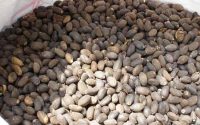Using Mustard Oil for Biodiesel
The “Mustard Bug” is not a pest, but a VW that runs on biodiesel made from mustard oil at the University of Idaho where they are researching mustard oil’s energy potential for biodiesel fuel.
Introduction
Mustard seed oil is not currently a common biodiesel feedstock, but because it has the potential to be a cheaper feedstock than the two most common oilseeds used for biodiesel (canola and soybeans), mustard oil biodiesel has been researched extensively at the University of Idaho.
Mustard is related to canola, but mustard can grow in drier areas and needs fewer pesticides and other agricultural inputs than canola. Therefore, it can potentially be grown more cheaply.
University of Idaho Mustard Oil Biodiesel Tests
From 2001 to 2005, the University of Idaho tested biodiesel made from two varieties of mustard seeds: Ida Gold (Sinapis alba L.), a variety of yellow mustard, and Pacific Gold (Brassica junceaL.), a variety of oriental spice mustard. These varieties were developed by Jack Brown of the
University of Idaho for the dryland farming environments of northern Idaho and eastern Washington .
Compared to canola, mustard seeds have less oil, and that oil is somewhat harder to extract. Ida Gold has about 24% to 27% oil content, and Pacific Gold has about 34% to 38% oil content, compared to 40% to 45% for canola. Extraction efficiency with a small mechanical screw press was 58% for Ida Gold and 70% for Pacific Gold, compared to 78% to 80% for canola .
Mustard oil biodiesel performed very well in vehicles. On-road testing with a 1999 Cummins 5.9L diesel engine in a Dodge pickup truck fueled with mustard biodiesel accumulated 56,465 miles with no difficulties. Fuel consumption increased compared to fossil diesel because biodiesel has slightly less energy per gallon than diesel fuel. The fuel filter had to be changed more often compared to what would normally be experienced with petroleum diesel. This may have been because the fuel filter material did not hold up well with biodiesel. On-road testing with a 2001 Volkswagen 1.9 L diesel engine accumulated 36,524 miles. Fuel consumption was about 46 miles per gallon of biodiesel .
Mustard oil biodiesel performs well in cold weather, with a “cloud point” of 3.5°C and a “pour point” of -15°C .
The cloud point is the temperature of the fuel at which small, solid crystals can be observed as the fuel cools. These crystals will clog vehicle filters. The pour point refers to the lowest temperature at which there is movement of the fuel when the container is tipped. Because mustard biodiesel has a much lower cloud point and pour point than biodiesel made from animal fats or tropical oils like palm oil, mustard biodiesel is useful in cold climates.
Mustard oil contains more long-chain fatty acids than canola oil (and less than industrial rapeseed). Therefore, sometimes mustard biodiesel turns out to be slightly more viscous (thicker) and may have a higher distillation temperature than the ASTM D6751 specification allows. In this case,
mustard biodiesel can be blended with other fuels (such as canola or soy biodiesel) in order to meet the specification.
Other Mustard Research
One disadvantage of using mustard seeds as a feedstock for biodiesel is that the seed meal left over after oil extraction cannot be fed to livestock in large quantities. Many biodiesel producers sell edible seed meal as livestock feed. Mustard seed meal retains the hot mustard flavor and has a high concentration of glucosinolates, making it unfit as a concentrated source of feed.
However, this same pungency adds value to the meal as a potential biopesticide. Mustard seed meal can be used to inhibit weeds and pests, which could make it valuable for the organic farming industry. Matt Morra at the University of Idaho is researching mustard seed meal as a biopesticide.
The University of Idaho Brassica breeding program is working on developing new mustard and canola varieties, including oilseed Brassica cultivars suitable for high-quality biodiesel.



